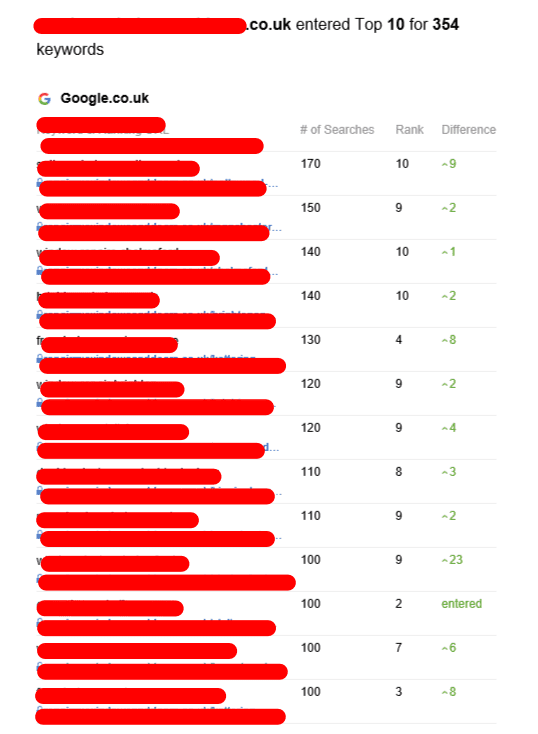tier 2 seo - The Hierarchy of Backlinks That Scale Your SEO Campaign
Backlink tier is the hierarchy of backlinks you construct to increase the effectiveness of your SEO campaign. Each level offers an additional layer of protection against Google's penalties.
Tiered link building requires lots of time and effort to get things right. It's because Google takes a long time to locate new backlinks, and then evaluate their quality on per-link basis.
First-Tier Links

The first layer of links that lead to your piece of content must be high-quality dofollow backlinks from reputable websites. These links are called Tier 1 backlinks and act as the basis of your link building strategy. They are a sign of trust for your web page, giving it the authority to rank well on search engine results pages. If, for instance your blog article was published on HubSpot and it included a tier one link to SearchEngineLand's compilation Link Building Statistics then SearchEngineLand’s ranking on the web will benefit from the link equity that HubSpot gave away.
The second tier could be more diverse and could include low-quality backlinks such as spammy forums posts or low-quality bookmark sites and directories. Tier 2's main goal is to create high-quality content that links back to your first-tier links. This is because quality content will improve the content in which it resides and won't stand out as something that was added for SEO purposes.
To build an effective tiered link building campaign, you'll need to invest in creating high-quality content and investing in tools like RankerX or GSA. However the time and effort spent manually running an effective tiered link building campaign can be worth it terms of the improved ranking benefits that come from having a well-organized backlink pyramid.
Second-Tier Links
Tiered link building is intended to allow users to navigate through other pages before navigating to your site. To accomplish this it's essential to select second-tier backlink sources that are relevant to your industry and website. Unlike account profiles guest blog posts are able to perform well in this regard because they provide valuable content that people want to consume.
In general, you should avoid using links of tier 2 on forums or on other low-quality websites. Instead, choose pages that are of high-quality like industry news or guest articles. These links will look more natural and will have greater impact on your search engine ranking. They're also more likely to be regarded as having acquired link equity from Google which can boost the value of their ranking in SERPs.
If you're looking to improve your SEO rankings It is important to know that obtaining these high-quality hyperlinks manually is a challenge. It can take months to pitch guest posts to top-tier publishers, and even longer them to get published. In addition, it can take weeks to see the results of your efforts in increasing traffic to your site and conversions.
Additionally, many SEOs turn to automated tools to assist them in create second-tier links. However, this approach could be in violation of Google's Webmaster guidelines and result in an infringement.
Third-tier Links
This level has a massive number of links, some that are borderline spammy. They are shared on social media platforms and on user-generated content websites such as Quora. They help with the indexing of tier two links but they don't transfer any link equity to the resource promoted. These are usually nofollow links. At this point, marketers are more concerned about quantity rather than quality. They make use of tools to post an huge amounts of hyperlinks on forums, in comment sections of blog posts and articles, in directories and other similar places. This is the place where tiered linking is a gray area that violates Google's webmaster rules.
Link-building campaigns that are classified require a lot of energy and time to be successful. It could take a few days or even months for Google to crawl a single backlink, and after that it could take months or even weeks to observe a significant impact on SEO. Therefore, marketers must be patient and employ an effective content strategy.
Marketers should avoid using excessively automated tools for this type of linking. They can be in violation of the rules of search engine optimization and could lead to penalties. It is preferential to select the links manually and publish them on relevant websites of donors instead of using automated tools like GSA or RankerX. This will prevent the search engine from penalizing a promotion with links that aren't of good quality.
Fourth-Tier Links
Tiered link building remains a well-known method of gaining higher website rankings. However, since Google has taken significant steps to stop "black black" SEO practices, tiered linking techniques have been slashed.
They are regarded as gray-hat SEO techniques and can be punished for their deliberate use. Tiered links are backlinks that are built on different tiers of an underlying pyramid of links. These backlinks are primarily used to improve a site's rank in search results. The promoted web page will rank higher than its competitors and will also receive more organic traffic.
The quality of the backlinks within this tier is the plunge and are usually nofollow. In addition this tier may be comprised of low-quality directories, media profiles, and article networks. These links can be made organically or through strategic automation tools. However, they must remain diverse in terms of niches, domains and relevance.
These backlinks, besides being of poor quality and nofollow, can also cause issues when they're not diversified enough. Google has a group of hounds that are well-trained and constantly look for patterns and techniques in backlink profiles. If they find them, not only can the link-building team get penalized, but so can its clients.
